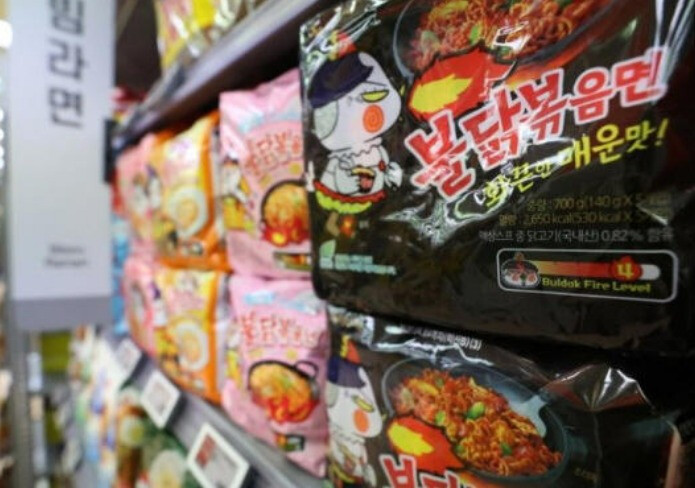
Seoul, South Korea – The global surge in K-pop and K-dramas has fueled an unprecedented demand for Korean cuisine, propelling K-food exports to record highs. In 2024, exports of Korean food and beverage products reached a staggering $9.98 billion, with ramen, kimbap (Korean sushi rolls), and tteokbokki (spicy rice cakes) leading the charge.
Notably, the United States has emerged as the largest market for Korean food, surpassing Japan for the first time. The popularity of Korean dramas and movies, featuring frequent scenes of characters enjoying these foods, has sparked a global K-food craze. Social media challenges centered around Korean cuisine have further boosted its appeal.
Ramen exports alone soared by 31.1% in 2024, reaching a record $1.25 billion, driven largely by the U.S. market. Similarly, exports of rice-based products, including kimbap, instant rice, and tteokbokki, more than doubled compared to 2020.
The success of K-food can be attributed to several factors, including growing interest in convenient and healthy foods, as well as the allure of Korean culture. Major food companies like CJ CheilJedang and Nongshim have reported significant increases in their overseas sales, particularly in the United States.
Industry experts believe that the actual value of K-food exports is even higher when considering the sales of Korean food companies' overseas subsidiaries.
Government Support Needed
While the outlook for K-food exports remains positive, industry stakeholders emphasize the need for continued government support to expand market reach. Experts suggest that the government should focus on helping small and medium-sized food companies enter new markets and provide greater exposure to diverse Korean food products.
[Copyright (c) Global Economic Times. All Rights Reserved.]






























